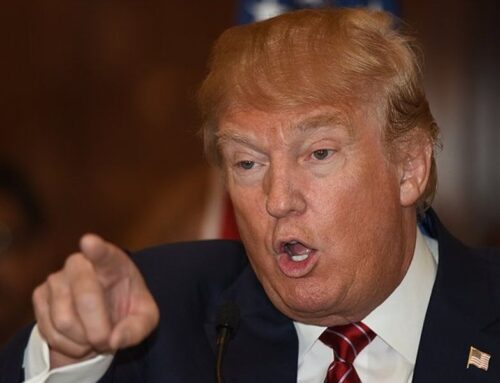China’s accelerating green transition
September 26, 2024
The sea of solar panels covering an area twice the size of Manhattan in the north-western Xinjiang region and the blades of an offshore wind turbine the height of the Eiffel Tower near the south-eastern island of Hainan reflect the magnitude of China’s renewable energy ambitions.
The scale and pace of the country’s transition away from fossil fuels has smashed international forecasts, exceeded Beijing’s own targets — and put the rest of the world on notice.
In July, China hit its target of having 1,200 gigawatts of installed solar and wind capacity, enough to power hundreds of millions of homes each year, six years early. There is more to come: around two-thirds of all new solar and wind power projects under construction are happening in China.
To deliver electricity generated from renewable sources in far-flung corners of the country to the cities and factories where it is needed, China is forecast to spend around $800bn by 2030 to modernise the transmission grid and its underlying software.
These measures are at the heart of plans to achieve leader Xi Jinping’s dual targets for China: to hit peak carbon emissions by 2030 and achieve carbon neutrality, or net zero, by 2060. Doing so has the potential to not only transform its economy, but turbocharge its global influence.
But to complete the shift away from coal to renewables, Chinese authorities need to push through a politically toxic shake-up of the electricity system, a long and thorny process that has already dragged on for decades.
This vital piece of the puzzle, many analysts believe, involves dealing a blow to the powerful state coal sector and establishing a market-based system for dispatching clean electricity across China’s regions.
“Further liberalisation of the power sector will be needed for further decarbonisation,” says David Fishman, a Shanghai-based energy analyst at The Lantau Group, a consultancy. “It’s not a universal maxim, but it’s true for China right now.”
The unparalleled investments in renewables comes as China desperately searches for new long-term growth drivers. The Politburo said on Thursday it would provide increased fiscal support to the economy just days after the central bank announced a major monetary stimulus.
Many economists are urging the government to try to stimulate growth by letting market forces play a bigger role in the economy — something that the proposed energy market reform would achieve.
The environmental impact of a cleaner China is significant not just for its 1.4bn people or the businesses that make up the world’s second-biggest economy, but for the planet. For decades, China has fulfilled the role of the world’s factory and become its biggest polluter by far, accounting for about 30 per cent of global emissions.
If things go Xi’s way over the coming years, that will no longer be the case. “Considering the significance of the scale of everything China does, reaching or exceeding almost every energy transition target it sets has far-reaching impacts for the climate and our global emissions reduction goals,” says Xuyang Dong, a China energy analyst at Sydney-based think-tank Climate Energy Finance.
Decarbonisation is also key to unlocking Xi’s long-held ambition of energy independence for the Chinese nation, a significant strategic boost at a historic low point in relations with the US and other parts of the western world.
China’s rapid adoption of green technologies — and the subsequent reduced long-term reliance on energy imports — is already starting to shape Beijing’s geopolitical calculations, says Ilaria Mazzocco, a senior fellow and China industrial expert at the Center for Strategic and International Studies, a US think-tank.
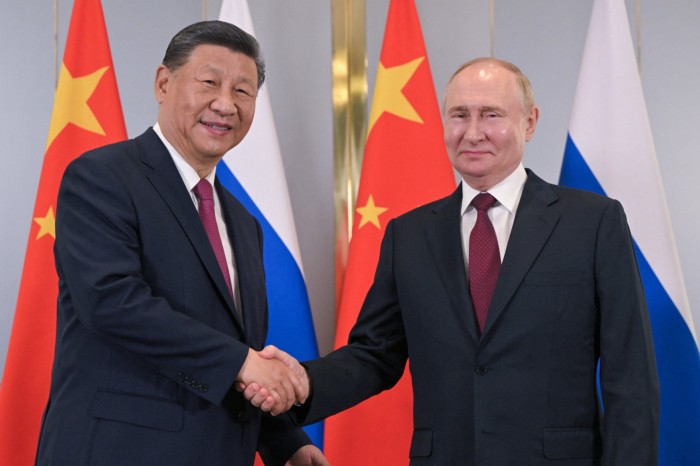
Reducing the need for cheap gas from Russia complicates Vladimir Putin’s close relationship with Xi, whom he has relied on to shore up the sanctions-hit Russian economy in the wake of his invasion of Ukraine. It also changes the dynamic between Beijing and the oil-rich Arab world, a region of expanding Chinese influence and American decline.
Cleaning up the Chinese economy also promises to strengthen domestic manufacturing capabilities of technologies that other countries will come to rely on for their own green transitions. This supports Xi’s plans to boost growth via clean technology exports, including wind turbines, solar panels, electric vehicles and lithium batteries.
“This has been positive reinforcement for the Chinese government when it comes to its decarbonisation strategy: pursuing climate policy is aligned with energy security and economic strategy policies. That alignment has been more difficult to achieve in some other countries, in part because China is so important and so dominant in this sector,” says Mazzocco.
“China could be, on the one hand, a lot less dependent on other countries, and on the other, it could make other countries a lot more dependent on China.”
Beijing has long outlined big ambitions for its green transition. But environmentalists inside and outside China remain sceptical that the country will ever shake its addiction to coal.
In the two decades after the turn of the century China’s emissions from burning of fossil fuels rose about 245 per cent to around 11 gigatonnes by 2021 — more than double that of the US, the world’s second biggest polluter.
Among their top worries are the slow rate of retirement of older coal-fired power plants, a resurgence in the pace of new coal builds — China accounted for two-thirds of all global coal-capacity additions last year — and a move last year by Beijing to guarantee a fixed payment to coal power stations, rather than just pay for the energy they produce.
For years, deep political opposition to reform has stemmed from China’s coal-related state-owned enterprises alongside State Grid and China Southern Power Grid — the two state groups responsible for electricity distribution and transmission to the entire country.
The coal industry has long resisted a more flexible grid system that benefits renewables and has “proven to be a very significant roadblock for any reforms”, says Li Shuo, one of the world’s top analysts of Chinese climate and energy policy. From the grid operator’s perspective, he adds, there has been “very strong political incentive” to prioritise coal power at the expense of cleaner, albeit fluctuating renewable energy sources.
But technological progress may help “bypass these political stalemates”, says Li, director of the China Climate Hub at the Asia Society Policy Institute in the US. He points to the sharp declines in the cost of both renewable power and the large-scale batteries that can be a vital power source when the sun is not shining, and the wind is not blowing.
“If the hardware is cost-competitive, you will be able to solve the problems,” Li says. “That’s always the easiest way to achieve things and to make progress in China.”
To that end, maintaining the speed and scale of the explosion in green-focused capital expenditure will be critical for China, experts say.
In the first seven months of the year, Beijing invested Rmb294.7bn ($41.3bn) in transmission projects, up 19 per cent on the same period in 2023, according to data from Climate Energy Finance. That compares to US plans for $3.5bn, announced last year by the Biden administration, which covers 58 transmission projects across 44 states.
Large-scale batteries also require more investment. Goldman Sachs forecast last year that China would require about 520 gigawatts of energy storage by 2030, with as much as 410GW coming from batteries, roughly a 70-fold increase from battery storage levels in 2021.
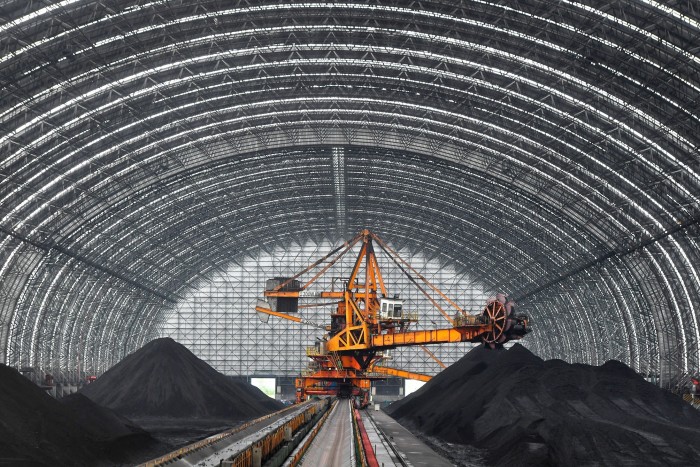
Spending levels across the sector will need to increase over the coming decades if China is to reach Xi’s dual carbon targets, says Dong, of CEF. That includes adding around 330GW of solar, 80GW of wind capacity and 4GW of nuclear to the grid every year until 2040 — numbers that are “significantly above the current run rate”.
Ken Liu, head of China renewables, utilities and energy research at UBS, points to two further trends — rising domestic power demand and major military escalations overseas — that could also hamper the delivery of Xi’s green dream.
Many experts assumed that power demand growth in China would stall in the wake of the country’s property sector collapse. Instead, it is outpacing GDP growth, thanks to a combination of higher export volumes — mostly shipments of electric vehicles, batteries and solar panels — alongside the electrification of the country’s transportation system and the boom in AI and data storage.
This will add pressure on power prices at a time of unprecedented capital expenditure. Despite the renewables boom, Liu also sees more signs of top-level political support for coal and nuclear power, highlighting renewed concerns over short-term energy security in the wake of conflicts in the Middle East and Europe.
“When we saw Ukraine and Russia, and then Israel and Palestine, that triggered the government to think more from the perspective of energy security,” he says, adding: “Coal is around 95 per cent locally supplied in China, so they don’t have to go out and source it.”
Xi previously summarised China’s transition to clean energy via the idiom: “xian li hou po”: “first build, then destroy”. So far, building renewables has been the easy part. Integrating new, disparate and intermittent sources of energy is far more challenging.
Across the country many cities and regions have already reached their limits. More than 100 counties and cities have suspended new small-scale solar operations from connecting to the local power lines. At least 12 of the country’s 34 province-level administrations have started urging solar operators to use battery storage to ease the burden from the creaking grid. Officials in some wind-rich provinces, including Inner Mongolia and Gansu, require wind developers to secure deals with factories before allowing them to be built.
But beyond batteries and power lines, is the need to establish a modernised electricity market, say many energy experts.
Muyi Yang, a senior electricity policy analyst at Ember, a UK-based think-tank, said that in the west, electricity markets have mostly been introduced to target price efficiencies and the state’s role recedes to regulation. In China, he adds, the “philosophy is different” and the main driver is to support renewable energy integration.
Electricity markets broadly involve pricing and information about supply and demand in real time. In China the aim is to make sure that all the available renewable energy sources, with free fuel costs, are used and thus reducing the need for more expensive and polluting fossil fuels.
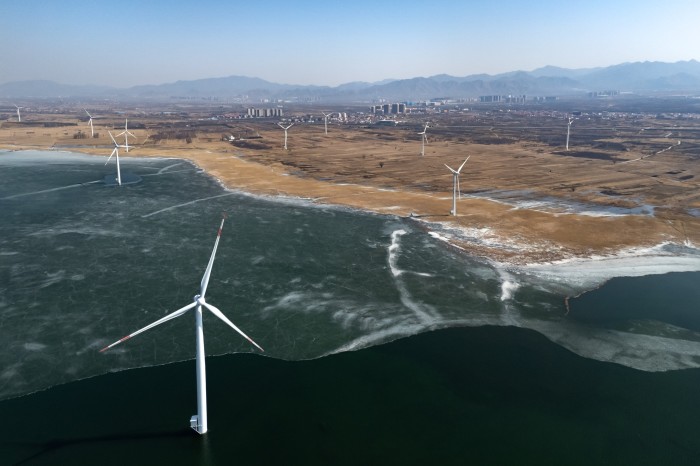
According to modelling from the International Energy Agency, using market-based systems results in reductions in CO₂ emissions of around 28 per cent and operating costs of around 15 per cent — double the benefit of regional co-ordination.
In an analysis provided to the Financial Times, two analysts from the IEA, Camille Paillard and Jacques Warichet, say China’s power sector reforms “have clearly gained momentum” over the past three years.
More than 20 provinces have set up trials for electricity spot markets and several are moving into permanent operation.
From here, the analysts say, an achievable pathway for an electricity market with “Chinese characteristics” involves turning the existing interprovincial pilot spot market operated by State Grid into a national one.
Rather than trying to achieve full integration of the power markets at the national level, this would create a secondary model whereby a single national market operates in parallel with the existing provincial and regional markets.
“This is well suited for China as local markets have adopted different models and are at uneven levels of maturity . . . To a certain extent, this would follow the European market integration approach, where national markets have been progressively coupled to support regional integration,” Paillard and Warichet say.
Still, the IEA analysts warn that while there is growing recognition of the potential benefits brought by markets, deep-rooted concerns remain. Price volatility, energy security and job losses within the power sector, especially in regions heavily reliant on coal, could slow down the market deployment. Implementation of central directives at the provincial level will be “key”, they add, if China is to establish a nationwide power market system.
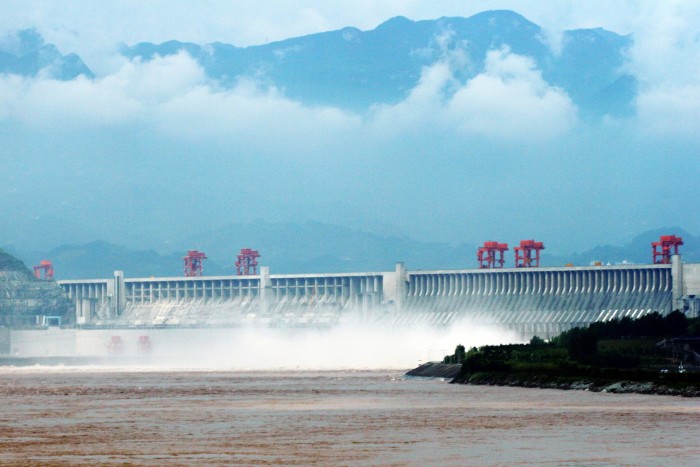
Lantau’s Fishman says that State Grid, which controls most of the power system in China, faces a “monstrous” task in meeting the government’s plans for a uniform power market by 2030.
“We’re talking about unifying supply and demand conditions over a huge swath of the country. To get that, you have to actually physically link all your provinces and all your regions and all your generating and power-consuming regions, and then have a market mechanism that lives behind it all,” he says.
Another problem for Beijing is how to break the chain of sweetheart deals between power buyers and electricity generators involving the thousands of state-owned groups that dominate the Chinese economy. It includes multibillion-dollar developments in conjunction with the private sector, such as the Three Gorges Dam, that were funded on the basis of favourable terms for their power long-term.
“The real question will be: what about the scads of coal plants that were constructed under some offtake agreement that was assumed to be guaranteed?” Fishman adds.
Given the potential climate impact, any progress China makes in establishing a more sophisticated power market will be significant, experts say.
Research published last year by scientific journal Nature Sustainability estimated that between 2011 and 2019 — before the latest renewable boom — delivering electricity via China’s centrally planned operation resulted in an additional three gigatonnes of carbon emissions, equivalent to India’s total emissions last year.
The researchers, who were mostly from leading Chinese universities, added that the level of extra emissions due to the lack of market pricing in some Chinese provinces accounted for as much as 20 per cent of the annual power-related emissions. Establishing a market system in China could therefore play a critical role “in the sustainability of human society”, they said.
But the rise of China as a green superpower comes at a time of tense relations between many foreign capitals and Beijing.
There is a long list of grievances that have left western countries — and their companies — wary of being dependent on an economy controlled by Xi and the Chinese Communist party. This includes allegations that Beijing’s industrial policy has violated international trade rules in supporting the country’s clutch of rising green champions, leading to the decimation of overseas rivals.

There are also concerns over supporting China as it rises to challenge American supremacy across an array of future-focused technologies. Against this backdrop, western governments will increasingly have to reconcile their feelings towards Beijing with their own climate change promises.
“The crux of the challenges that both the US and Europe have had within their climate policies is: they feel that moving too quickly on climate . . . would create dependencies on China in a pretty strategic sector,” says Mazzocco.
For global manufacturers, Beijing’s green ambitions might ultimately clash with political pressure from western governments currently trying to move production out of China.
“The moment companies start calculating carbon emissions and potentially start paying carbon taxes, or enjoying carbon credits, there are going to be shifts in supply chains,” says Gopul Shah, a director at Golden Agri-Resources, a major palm oil producer headquartered in Singapore, adding that “we may see some manufacturing supply chains moving back to China because of the emissions reductions on offer.”
Additional reporting by Wenjie Ding in Beijing
Search
RECENT PRESS RELEASES
Related Post

